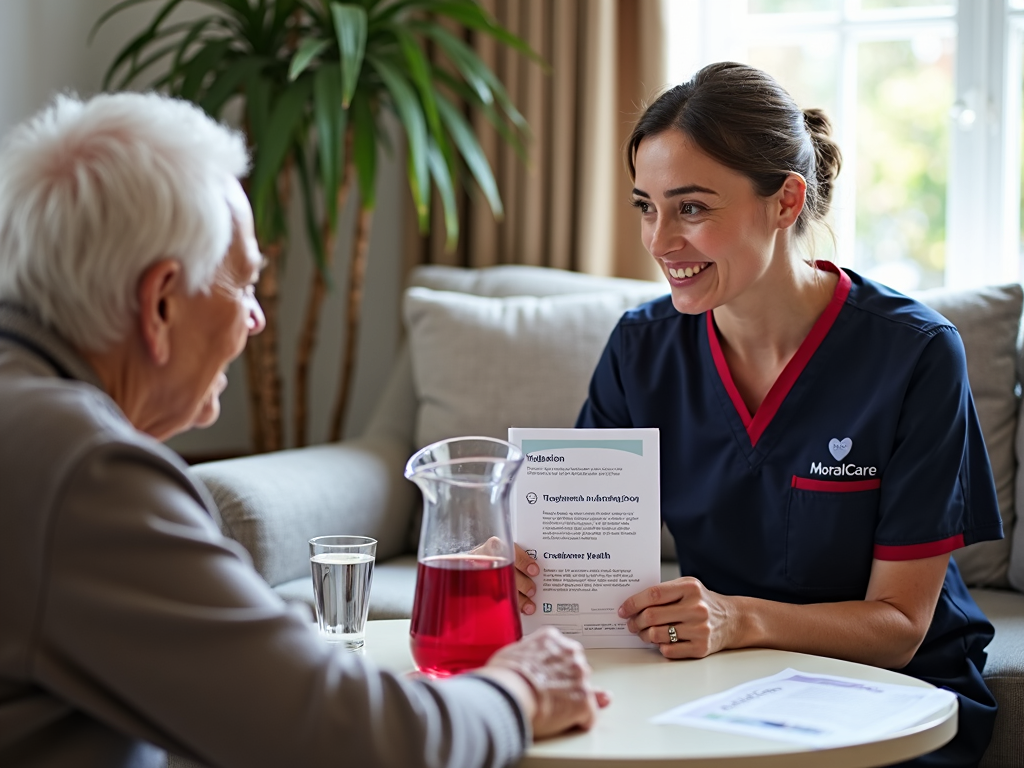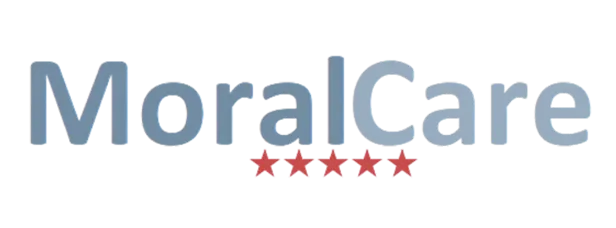UTI Prevention in Elderly: Signs, Causes, and Prevention Strategies

Urinary tract infections (UTIs) are among the most common infections affecting elderly people, accounting for nearly 25% of all infections in adults over 65. What makes UTIs particularly concerning in older adults is that they often present with atypical symptoms and can lead to serious complications if left untreated. Understanding the causes, recognising the signs, and implementing effective prevention strategies can significantly reduce the risk and improve quality of life for elderly individuals.
Understanding UTIs in Elderly People
What Are Urinary Tract Infections?
Definition and Types: A urinary tract infection occurs when bacteria enter and multiply in the urinary system, which includes the kidneys, ureters, bladder, and urethra. UTIs are classified based on their location:
Cystitis: Infection of the bladder (most common)
Urethritis: Infection of the urethra
Pyelonephritis: Infection of the kidneys (most serious)
Asymptomatic bacteriuria: Bacteria present without symptoms
Why Elderly Are More Susceptible:
Weakened immune system reduces ability to fight infections
Incomplete bladder emptying allows bacteria to multiply
Hormonal changes in women after menopause
Prostate enlargement in men affecting urine flow
Reduced mobility affecting hygiene and toileting
Chronic conditions like diabetes increasing infection risk
The Impact of UTIs on Elderly Health
Physical Complications:
Kidney damage from untreated infections
Sepsis - life-threatening blood infection
Increased fall risk from confusion and weakness
Hospitalisation requirements for severe cases
Antibiotic resistance from repeated infections
Cognitive and Behavioural Effects:
Sudden confusion or delirium
Agitation and behavioural changes
Memory problems that may seem like dementia
Sleep disturbances and restlessness
Personality changes that concern families
Recognising UTI Signs and Symptoms
Typical UTI Symptoms
Classic Signs:
Burning sensation during urination (dysuria)
Frequent urination with small amounts
Urgent need to urinate that's difficult to delay
Cloudy or strong-smelling urine
Pelvic pain in women
Blood in urine (haematuria)
Systemic Symptoms:
Fever and chills
Nausea and vomiting
General malaise and fatigue
Lower back pain (kidney involvement)
Abdominal discomfort
Atypical Symptoms in Elderly
Why Symptoms Differ: Elderly people often don't present with classic UTI symptoms due to:
Weakened immune response
Reduced pain sensation
Existing chronic conditions masking symptoms
Medication effects altering symptom presentation
Communication difficulties in expressing discomfort
Atypical Presentations:
Sudden confusion or increased confusion in dementia patients
Falls or increased unsteadiness
Behavioural changes like agitation or withdrawal
Incontinence that's new or worsening
General decline in function or appetite
Fatigue or weakness without other obvious cause
Red Flag Symptoms:
High fever (above 38.5°C/101.3°F)
Severe confusion or delirium
Vomiting and inability to keep fluids down
Severe back pain suggesting kidney involvement
Signs of sepsis - rapid pulse, low blood pressure, altered consciousness
Causes and Risk Factors
Primary Causes of UTIs
Bacterial Causes:
E. coli (most common - 75-85% of cases)
Klebsiella species
Enterococcus species
Pseudomonas (more common in catheterised patients)
Staphylococcus saprophyticus
How Bacteria Enter:
Ascending route: Bacteria travel up from the urethra
Bloodstream: Less common, usually from other infections
Direct spread: From nearby infected organs
Catheter-related: Through indwelling catheters
Age-Related Risk Factors
Physical Changes:
Bladder changes: Reduced capacity and incomplete emptying
Immune system decline: Less effective at fighting infections
Hormonal changes: Reduced oestrogen in women
Prostate enlargement: In men, affecting urine flow
Kidney function decline: Reduced filtering efficiency
Gender-Specific Factors:
Women:
Shorter urethra allows easier bacterial access
Post-menopause changes: Reduced oestrogen affects urinary tract
Pelvic organ prolapse: Can affect bladder emptying
Previous UTI history: Increases recurrence risk
Sexual activity: Can introduce bacteria
Men:
Prostate problems: Benign enlargement or infection
Catheter use: Higher risk with indwelling catheters
Kidney stones: Can harbour bacteria
Diabetes complications: Affecting immune function
Anal intercourse: Increases bacterial exposure risk
Medical and Lifestyle Risk Factors
Chronic Health Conditions:
Diabetes: High blood sugar promotes bacterial growth
Kidney disease: Reduced filtering and immune function
Neurological conditions: Affecting bladder control
Immune system disorders: Reduced infection-fighting ability
Bowel problems: Constipation or incontinence
Medications:
Immunosuppressants: Reduce infection-fighting ability
Antibiotics: Can disrupt normal bacterial balance
Diuretics: May affect urinary tract function
Anticholinergics: Can cause urinary retention
Steroids: Suppress immune system function
Lifestyle Factors:
Poor hygiene: Inadequate cleaning practices
Dehydration: Concentrated urine promotes bacterial growth
Immobility: Affects bladder emptying and hygiene
Catheter use: Provides pathway for bacteria
Sexual activity: Can introduce bacteria
Prevention Strategies
Hydration and Fluid Management
Optimal Hydration:
Daily fluid intake: 6-8 glasses (1.5-2 litres) unless medically restricted
Water preference: Plain water is best for urinary tract health
Timing: Spread intake throughout the day
Quality: Clean, safe drinking water
Monitoring: Aim for pale yellow urine colour
Beneficial Fluids:
Water: Primary choice for hydration
Cranberry juice: May help prevent bacterial adhesion (unsweetened)
Herbal teas: Chamomile, green tea (caffeine-free options)
Diluted fruit juices: In moderation
Broths and soups: Contribute to fluid intake
Fluids to Limit:
Caffeine: Can irritate the bladder
Alcohol: Can affect immune function and hydration
Sugary drinks: May promote bacterial growth
Artificial sweeteners: Some may irritate the bladder
Carbonated beverages: May cause bladder irritation
Personal Hygiene Practices
Daily Hygiene Routine:
Regular washing: Daily cleaning of genital area
Proper technique: Front to back wiping after toileting
Gentle products: Use mild, unscented soaps
Complete drying: Ensure area is thoroughly dry
Clean clothing: Daily change of underwear
Toileting Hygiene:
Wipe correctly: Always front to back to prevent bacterial spread
Complete emptying: Take time to fully empty bladder
Post-intercourse urination: Urinate within 30 minutes after sexual activity
Hand hygiene: Wash hands before and after toileting
Avoid holding: Don't delay urination when feeling the urge
Clothing Choices:
Breathable fabrics: Cotton underwear allows air circulation
Proper fit: Avoid tight-fitting clothing around genital area
Daily changes: Fresh underwear daily, more if needed
Avoid irritants: Skip scented products, fabric softeners on underwear
Absorbent products: Change incontinence products frequently
Bladder Health Maintenance
Healthy Voiding Habits:
Regular schedule: Urinate every 3-4 hours during the day
Complete emptying: Take time to fully empty bladder
Proper positioning: Sit properly on toilet, feet flat on floor
Relaxation: Don't rush, allow bladder to empty completely
Double voiding: Urinate, wait a moment, then try again
Bladder Training:
Scheduled toileting: Regular bathroom breaks
Pelvic floor exercises: Strengthen muscles supporting bladder
Bladder diary: Track patterns and identify problems
Gradual training: Slowly increase time between voids if appropriate
Professional guidance: Work with healthcare providers for bladder problems
Dietary Considerations
UTI-Fighting Foods:
Cranberries: May prevent bacterial adhesion to urinary tract
Blueberries: Contain similar compounds to cranberries
Probiotics: Yoghurt, kefir support healthy bacterial balance
Vitamin C rich foods: Citrus fruits, berries, peppers
Garlic: Natural antimicrobial properties
Foods to Limit:
Refined sugars: May promote bacterial growth
Spicy foods: Can irritate the bladder
Artificial sweeteners: Some may cause bladder irritation
Excessive caffeine: Can irritate urinary tract
Processed foods: Often high in sodium and preservatives
Nutritional Support:
Adequate protein: Supports immune system function
Whole grains: Provide sustained energy and nutrients
Fresh vegetables: Rich in vitamins and antioxidants
Healthy fats: Support overall health and immune function
Balanced meals: Regular eating patterns support overall health
Managing Incontinence and UTI Risk
Types of Incontinence
Stress Incontinence:
Cause: Weak pelvic floor muscles
Triggers: Coughing, sneezing, laughing, lifting
UTI Risk: Incomplete emptying, hygiene challenges
Management: Pelvic floor exercises, proper products
Prevention: Regular toileting, appropriate absorbent products
Urge Incontinence:
Cause: Overactive bladder muscles
Symptoms: Sudden, strong urge to urinate
UTI Risk: Frequent small voids, residual urine
Management: Bladder training, scheduled toileting
Prevention: Avoid bladder irritants, maintain hydration
Overflow Incontinence:
Cause: Bladder doesn't empty completely
Symptoms: Frequent dribbling, feeling of incomplete emptying
UTI Risk: High due to residual urine
Management: Address underlying causes, catheterisation if needed
Prevention: Regular medical monitoring, proper positioning
Incontinence Product Management
Product Selection:
Appropriate absorbency: Match product to individual needs
Proper fit: Ensure comfort and leak protection
Skin-friendly materials: Reduce risk of irritation
Breathable products: Allow air circulation
Quality brands: Invest in reliable, effective products
Hygiene with Products:
Frequent changes: Change immediately when soiled
Proper disposal: Hygienic disposal methods
Skin care: Clean and dry skin with each change
Barrier creams: Protect skin from moisture
Professional guidance: Continence nurse advice
Catheter Care and UTI Prevention
Types of Catheters
Indwelling Catheters:
Uses: Long-term drainage, post-surgery, severe incontinence
UTI Risk: High - provides direct pathway for bacteria
Care Requirements: Strict hygiene protocols
Monitoring: Regular assessment for complications
Replacement: Scheduled changes as recommended
Intermittent Catheters:
Uses: Incomplete bladder emptying, neurological conditions
UTI Risk: Lower than indwelling if used properly
Technique: Sterile or clean technique as prescribed
Frequency: As recommended by healthcare provider
Training: Proper technique essential
Catheter Care Protocols
Daily Care:
Hand hygiene: Thorough handwashing before and after care
Catheter cleaning: Clean around insertion site daily
Bag maintenance: Keep drainage bag below bladder level
Tubing care: Ensure no kinks or blockages
Observation: Monitor for signs of infection or problems
Infection Prevention:
Sterile technique: For catheter insertion and care
Closed system: Maintain closed drainage system
Regular emptying: Empty bag when 2/3 full
Proper positioning: Avoid tension on catheter
Professional oversight: Regular medical review
Medical Management and Monitoring
Regular Health Assessments
Routine Monitoring:
Annual health checks: Include urinary tract assessment
Urine testing: Regular screening for bacteria
Kidney function tests: Monitor for complications
Medication review: Assess effects on urinary tract
Risk factor assessment: Identify and address modifiable risks
Diabetes Management:
Blood sugar control: Maintain target levels
Regular monitoring: Check glucose levels as prescribed
Medication compliance: Take diabetes medications as directed
Foot care: Prevent complications that affect mobility
Professional support: Regular diabetes clinic appointments
Medication Considerations
Antibiotics:
Appropriate use: Only when infection confirmed
Complete courses: Finish entire prescription
Resistance prevention: Avoid unnecessary use
Side effects: Monitor for complications
Professional guidance: Never self-medicate
Preventive Medications:
Low-dose antibiotics: For recurrent UTIs (specialist prescription)
Oestrogen therapy: For post-menopausal women (specialist assessment)
Cranberry supplements: May help some individuals
Probiotics: Support healthy bacterial balance
Professional oversight: All preventive treatments need medical supervision
When to Seek Medical Help
Early Intervention Signs
Concerning Symptoms:
Burning during urination that doesn't improve
Frequent urination with urgency
Cloudy or foul-smelling urine
Blood in urine
Pelvic or back pain
Behavioural Changes:
New confusion or increased confusion
Agitation or personality changes
Increased falls or unsteadiness
Loss of appetite or general decline
Sleep disturbances
Emergency Situations
Seek Immediate Medical Attention:
High fever (above 38.5°C/101.3°F)
Severe confusion or delirium
Vomiting and inability to keep fluids down
Severe back pain suggesting kidney involvement
Signs of sepsis: rapid pulse, low blood pressure, altered consciousness
Complete inability to urinate
Emergency Response:
Call 999 for severe symptoms
Contact GP urgently for concerning changes
Don't delay seeking help for elderly UTI symptoms
Bring medication list to medical appointments
Provide symptom history including timeline and changes
Supporting Elderly with UTI Prevention
Family and Carer Involvement
Daily Support:
Hydration reminders: Encourage regular fluid intake
Toileting assistance: Help with mobility and hygiene
Medication management: Ensure compliance with treatments
Symptom monitoring: Watch for changes in behaviour or health
Hygiene support: Assist with personal care as needed
Environmental Modifications:
Easy toilet access: Remove barriers to bathroom use
Good lighting: Ensure safe navigation to toilet
Grab bars: Install safety equipment
Comfortable seating: Proper toilet height and support
Privacy: Maintain dignity while providing necessary support

Comments